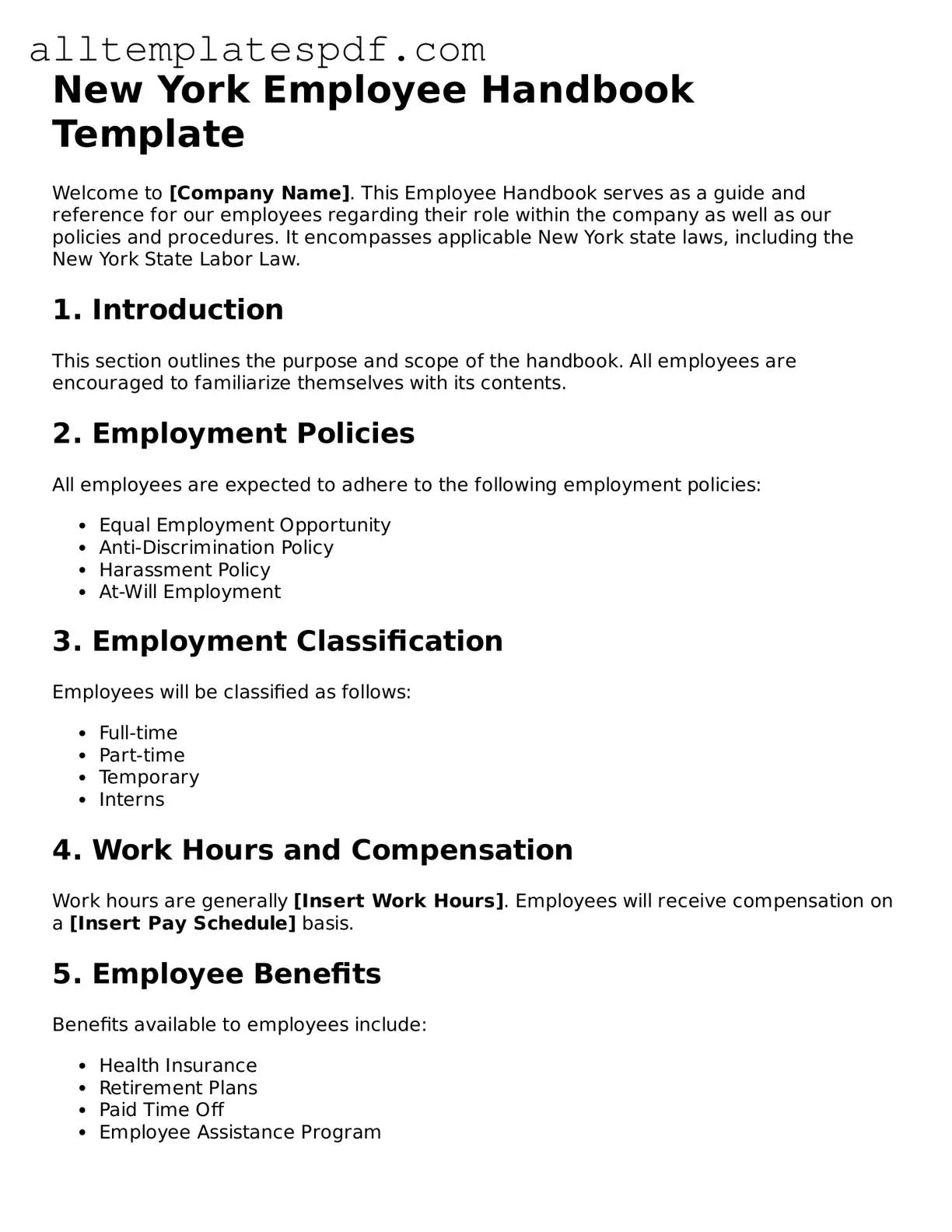Filling out the New York Employee Handbook form can seem straightforward, but many individuals encounter pitfalls along the way. One common mistake is failing to read the instructions carefully. Each section of the form has specific requirements, and overlooking these details can lead to incomplete submissions. Taking the time to understand what is needed can save a lot of frustration later.
Another frequent error is neglecting to provide accurate personal information. Whether it’s a misspelled name or an incorrect address, inaccuracies can create issues down the line. It’s crucial to double-check all entries for correctness before finalizing the form.
Many people also forget to sign and date the form. This step is essential, as a signature indicates that the employee has acknowledged the contents of the handbook. Without it, the form may be considered invalid, which could lead to misunderstandings regarding company policies.
Additionally, some individuals overlook the importance of updating their information regularly. Life changes, such as a new address or marital status, should be reflected in the handbook form. Keeping this information current ensures that employees receive important communications from their employer.
Another mistake is not asking questions when something is unclear. If there’s confusion about a particular section, reaching out for clarification can prevent errors. Employers typically appreciate when employees seek to understand their rights and responsibilities better.
Some individuals may also skip the acknowledgment of receipt section. This part often confirms that the employee has received and understood the handbook. Failing to complete this section can lead to assumptions that the employee is unaware of company policies.
Moreover, individuals sometimes ignore the confidentiality agreements that may be included in the handbook. It’s important to recognize the significance of these agreements, as they protect both the employee and the employer. Not adhering to these guidelines can have serious repercussions.
Lastly, procrastination can lead to rushed submissions. Filling out the form at the last minute can result in careless mistakes. Setting aside dedicated time to complete the handbook form thoughtfully can help ensure accuracy and compliance with company policies.
